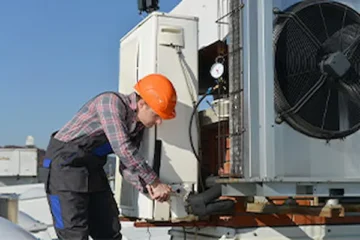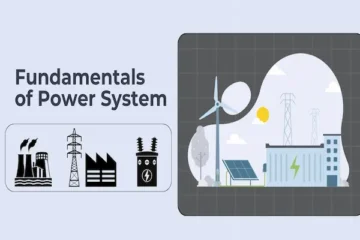Diploma in Welding Technology (free to learn)
Master welding fundamentals with free online classes
Anúncios
Safety, MIG/TIG processes, simulated practice, and recognized certification.
Complete Guide to Starting Your Welding Journey From Home
Learning to weld doesn’t have to cost thousands of dollars or require you to quit your day job.
Free online welding courses give beginners the chance to learn essential welding skills, safety rules, and basic techniques from home without spending money on expensive trade school programs.
These courses cover everything from stick welding to TIG welding basics.
You can start building real welding knowledge through video lessons, safety training, and theory that prepares you for hands-on practice.
Many free programs offer certificates you can use to show employers your commitment to learning the trade.
The courses teach you about different welding types, proper equipment use, and workplace safety rules.
Whether you want to start a new career or pick up a valuable skill, free online welding courses provide a solid foundation.
You’ll discover what equipment you need, how to practice safely, and ways to turn your new welding knowledge into job opportunities in construction, manufacturing, or other industries that need skilled welders.
What to Expect From a Free Welding Course Online for Beginners
Free online welding courses offer structured lessons covering safety basics, welding techniques, and equipment knowledge.
These courses use video tutorials and written materials to teach fundamental skills at your own pace.
Course Structure and Format
Most free online welding courses use a module-based system.
You complete lessons in order, starting with basic safety rules.
Each lesson includes video demonstrations and written guides.
Some courses add quizzes to test your knowledge after each section.
Common course formats include:
- Self-paced lessons you can start anytime
- Weekly modules with set deadlines
- Live online classes with instructors
- Pre-recorded video series
You typically need 10-20 hours to finish a basic course.
Many platforms let you pause and restart lessons when convenient.
Some courses offer certificates when you complete all modules.
Others provide progress tracking to show which topics you’ve finished.
Typical Curriculum Topics
Welding courses for beginners start with safety training.
You learn about protective gear, ventilation, and fire prevention rules.
Core topics usually covered:
- Safety procedures – proper clothing, eye protection, workspace setup
- Welding basics – how metals join together, heat effects
- Equipment types – welders, electrodes, gas tanks
- Common techniques – stick welding, MIG welding, TIG welding
- Material preparation – cleaning, positioning, clamping
Many courses explain different welding positions like flat, horizontal, and vertical.
You also learn about electrode angles and movement patterns.
Some advanced free courses cover specific industries like automotive repair or construction welding.
Key Benefits of Online Learning
Online welding courses let you learn on your schedule. You can watch lessons during evenings or weekends without traveling to a classroom.
Key advantages include:
- Flexible timing – study when it works for your schedule
- Replay options – watch difficult sections multiple times
- Cost savings – no travel expenses or classroom fees
- Wide selection – choose from many different course styles
You can pause videos to take notes or look up unfamiliar terms. This helps you learn at a comfortable speed.
Online learning works well for theory and safety knowledge.
However, you still need hands-on practice with real welding equipment to develop practical skills.

Fundamentals of Welding for Beginners
Welding joins metals together using heat, pressure, or both to create strong permanent bonds.
The main welding processes include stick, MIG, TIG, and flux-core welding, each designed for specific materials like steel, aluminum, and stainless steel.
Overview of Welding Processes
Welding works by melting base metals at their joint edges. The molten metal cools and hardens to form a solid connection.
Heat Sources:
- Electric arc (most common)
- Gas flame
- Laser beam
- Friction
Key Components:
- Power source – provides electricity for the arc
- Electrode – conducts current to create the arc
- Filler metal – adds material to fill the joint
- Shielding – protects the weld from air contamination
The welding process creates temperatures between 6,000 to 20,000 degrees Fahrenheit.
This extreme heat melts the metals so they can fuse together.
Most welding uses an electric arc that jumps between the electrode and your workpiece.
The arc creates the heat needed to melt the metal.
Common Welding Techniques
Stick Welding (SMAW) Uses a coated electrode that melts to provide both filler metal and shielding gas. Best for thick steel and outdoor work.
MIG Welding (GMAW) Feeds wire continuously through a gun while shielding gas protects the weld. Easy to learn and works on thin to medium thickness metals.
TIG Welding (GTAW) Uses a tungsten electrode that doesn’t melt. You add filler rod separately. Creates the cleanest, strongest welds but requires more skill.
Flux-Core Welding Similar to MIG but uses special wire with flux inside instead of shielding gas. Works well in windy conditions.
Each welding technique has specific uses. Stick welding works great for construction and repair work.
MIG welding suits automotive and fabrication projects. TIG welding produces precision welds for aerospace and food equipment.
Materials and Joint Types
Common Welding Materials:
- Carbon steel (easiest to weld)
- Stainless steel (requires special techniques)
- Aluminum (needs AC current for TIG)
- Cast iron (challenging for beginners)
Basic Joint Types:
| Joint Type | Description | Common Uses |
|---|---|---|
| Butt | Two pieces end-to-end | Structural welding |
| Corner | Two pieces at 90 degrees | Boxes, frames |
| Lap | One piece overlaps another | Sheet metal work |
| Tee | One piece perpendicular to another | Brackets, supports |
Material Thickness Guide:
- Thin (under 1/8 inch) – MIG or TIG
- Medium (1/8 to 1/4 inch) – MIG or stick
- Thick (over 1/4 inch) – Stick welding
Different materials need different welding techniques.
Steel works with all methods. Aluminum requires TIG or special MIG setups. Stainless steel needs lower heat settings to prevent warping.
Essential Welding Safety
Proper welding safety protects you from serious injuries like burns, eye damage, and breathing problems.
Using the right protective gear, keeping your workspace clean, and handling tools correctly are the most important steps for safe welding.
Personal Protective Equipment (PPE)
Your welding helmet is your most important safety tool. It protects your eyes and face from bright light and sparks.
Choose a helmet with the right shade number for your welding type.
Auto-darkening helmets work best for beginners.
They switch from light to dark automatically when you start welding.
Wear thick leather gloves that cover your wrists. Regular work gloves will not protect you from welding heat.
Your gloves should fit snugly but still let you move your fingers easily.
Long-sleeve shirts and long pants made from cotton or leather protect your skin.
Never wear synthetic fabrics like polyester. They can melt and stick to your skin if sparks hit them.
Safety glasses go under your helmet for extra eye protection.
Leather boots protect your feet from hot metal pieces that fall during welding.
Safe Workspace Practices
Remove all flammable materials from your welding area.
This includes paper, cloth, wood, and cleaning chemicals. Keep a fire extinguisher within easy reach.
Work in areas with good air flow. Welding creates harmful fumes that you should not breathe.
Open doors and windows or use fans to move fresh air through your workspace.
Keep your work area clean and organized. Clutter creates trip hazards and fire risks. Store welding equipment properly when not in use.
Check for gas leaks before you start welding. Soapy water on gas connections will bubble if there is a leak.
Never weld near gas lines or tanks.
Make sure other people stay at least 50 feet away from your welding area.
Welding light can damage their eyes even from a distance.
Handling Welding Equipment
Inspect all welding equipment before each use. Look for damaged cords, loose connections, and worn parts.
Never use equipment that looks broken or unsafe.
Turn off your welder and disconnect power when changing electrodes or making adjustments.
Hot welding equipment can cause severe burns even after you stop welding.
Store electrodes in a dry place. Wet electrodes can cause dangerous electrical problems and poor weld quality.
Keep welding cables away from walkways where people might trip.
Arrange cords so they do not cross water or sharp metal edges.
Never touch the electrode or metal workpiece with bare skin while welding.
The electrical current can cause serious injury or death.
Hands-On Training and Practical Skills
Online welding courses use virtual tools and simulations to teach real welding skills.
You can also practice basic techniques at home using simple methods and equipment.
Virtual Simulations and Demonstrations
Many free online welding courses now include virtual welding simulators.
These programs let you practice welding motions on your computer or mobile device.
The simulators show you how to hold the welding torch correctly.
They teach you the right speed and angle for different types of welds.
Popular virtual welding features include:
- 3D welding environments
- Real-time feedback on your technique
- Practice with different welding positions
- Safety training scenarios
YouTube channels and course platforms offer detailed video demonstrations.
You can watch professional welders show each step of the process.
Many videos use close-up cameras so you can see exactly how they move the torch.
These virtual tools help you learn the basics before touching real welding equipment.
You can practice as many times as needed without wasting materials.
Home Practice Tips for Beginners
You can practice basic welding skills at home without expensive equipment.
Start by learning proper hand movements using a pencil or marker.
Basic practice exercises:
- Draw straight lines on paper to practice steady hand motion
- Practice circles and curves to improve control
- Hold objects at different angles to build arm strength
Set up a practice area in your garage or workshop. Use scrap metal pieces to practice marking and measuring cuts.
Watch welding training videos while following along with your hands. This helps build muscle memory for torch movements.
Practice wearing safety gear like welding gloves and helmets. Getting comfortable with the equipment makes real welding easier when you start.
Join local welding groups or maker spaces for hands-on practice time. Many communities offer workshop access at low cost for beginners.
Earning Your Welding Certificate Online
Getting a welding certificate online means completing courses and passing tests through digital platforms.
Most programs offer certificates from recognized organizations like the American Welding Society (AWS).
Types of Welding Certification Available
Basic welding certificates cover fundamental skills and safety. These include stick welding, MIG welding, and TIG welding certifications.
AWS certifications are the most respected in the industry. The American Welding Society offers several levels:
- Certified Welder (CW) – Entry level certification
- Certified Welding Inspector (CWI) – Advanced inspection role
- Certified Welding Educator (CWE) – Teaching certification
Process-specific certificates focus on one welding type. You can get certified in TIG, MIG, stick, or flux core welding separately.
Industry certificates target specific fields like automotive or construction welding. These combine general skills with specialized techniques.
Most online programs offer completion certificates rather than full trade certifications. These show you finished the course but may need hands-on testing for full certification.
Criteria and Assessment for Beginners
Online welding courses use video assessments and written tests. You submit videos of your welding work for instructor review.
Written exams test your knowledge of safety, equipment, and techniques. Most courses require 70% or higher to pass.
Practical requirements vary by program. Some courses need you to find local testing centers for hands-on evaluation.
Time requirements typically range from 20 to 100 hours of study. Beginner courses usually take 4-8 weeks to complete.
Equipment needs include a welding machine and basic tools. Some programs provide equipment lists or partner with local shops for practice time.
Prerequisites are minimal for beginner courses. Most only require basic math skills and safety awareness.
Recognized Accreditation and Organizations
American Welding Society (AWS) is the top accrediting body. AWS certification is accepted by most employers nationwide.
National Center for Construction Education and Research (NCCER) offers recognized welding credentials. Their certificates focus on construction industry needs.
American Society of Mechanical Engineers (ASME) provides specialized certifications. These target pressure vessel and pipeline welding.
Employer recognition varies by certificate type. AWS certificates have the highest acceptance rate among hiring managers.
State licensing may require additional steps. Some states need hands-on testing even with online certificates.
International recognition exists for AWS certifications. Many countries accept AWS credentials for work permits.
Launching Your Welding Career After Completing a Free Online Course
Finishing a free online welding course opens doors to entry-level positions and creates a foundation for career growth. Professional development and industry connections become key factors in building long-term success in the welding field.
Career Paths for Certified Beginners
Entry-level welding positions offer good starting salaries and room for growth. Most beginners start as general welders in manufacturing plants or construction sites.
Construction welding jobs are common first positions. You can work on buildings, bridges, or roads. These jobs teach you to work with different materials and conditions.
Manufacturing plants hire new welders regularly. Auto plants, shipyards, and factories need welders for production lines. The work is steady and helps you build consistent skills.
Specialized career paths include:
- Underwater welding (requires additional training)
- Pipeline welding for oil and gas companies
- Aerospace welding for aircraft manufacturing
- Railroad welding for train maintenance
Starting salaries range from $35,000 to $45,000 per year. Experienced welders can earn $60,000 or more annually.
Your online welding course certificate shows employers you understand basic safety and techniques. Many companies provide additional on-the-job training for specific processes.
Further Training and Professional Development
Advanced certifications boost your earning power and job options. The American Welding Society (AWS) offers industry-standard certifications that employers recognize.
Popular AWS certifications include:
- Certified Welder (CW)
- Certified Welding Inspector credentials
- Advanced process certifications (TIG, MIG, Stick)
Schools like Tulsa Welding School offer hands-on programs that build on your online foundation. These programs provide real equipment practice that online courses cannot offer.
Welding training continues throughout your career. New technologies and safety rules require ongoing education. Many employers pay for additional welding course completion.
Skills to develop after basic training:
- Reading blueprints and technical drawings
- Quality control and inspection techniques
- Specialized welding processes
- Safety leadership and supervision
Community colleges offer affordable continuing education. Trade unions also provide advanced welding training for members.
Industry Partnerships and Opportunities
Many free online welding programs connect students with employers. These partnerships help you find your first job after completing your welding course.
Construction companies often hire directly from training programs. They need reliable welders and prefer candidates with proper safety training.
Industries actively hiring welders:
- Oil and gas pipeline companies
- Shipbuilding and repair facilities
- Heavy equipment manufacturers
- Infrastructure and bridge construction
Apprenticeship programs combine work with continued learning. You earn money while gaining experience under skilled welders.
Union partnerships offer strong job security and benefits. Many unions accept online welding course graduates into their apprentice programs.
Some employers sponsor additional welding training for promising workers. This can lead to welding inspector roles or supervisory positions.
Professional associations provide networking opportunities. Joining groups like AWS helps you meet other welders and learn about job openings.





